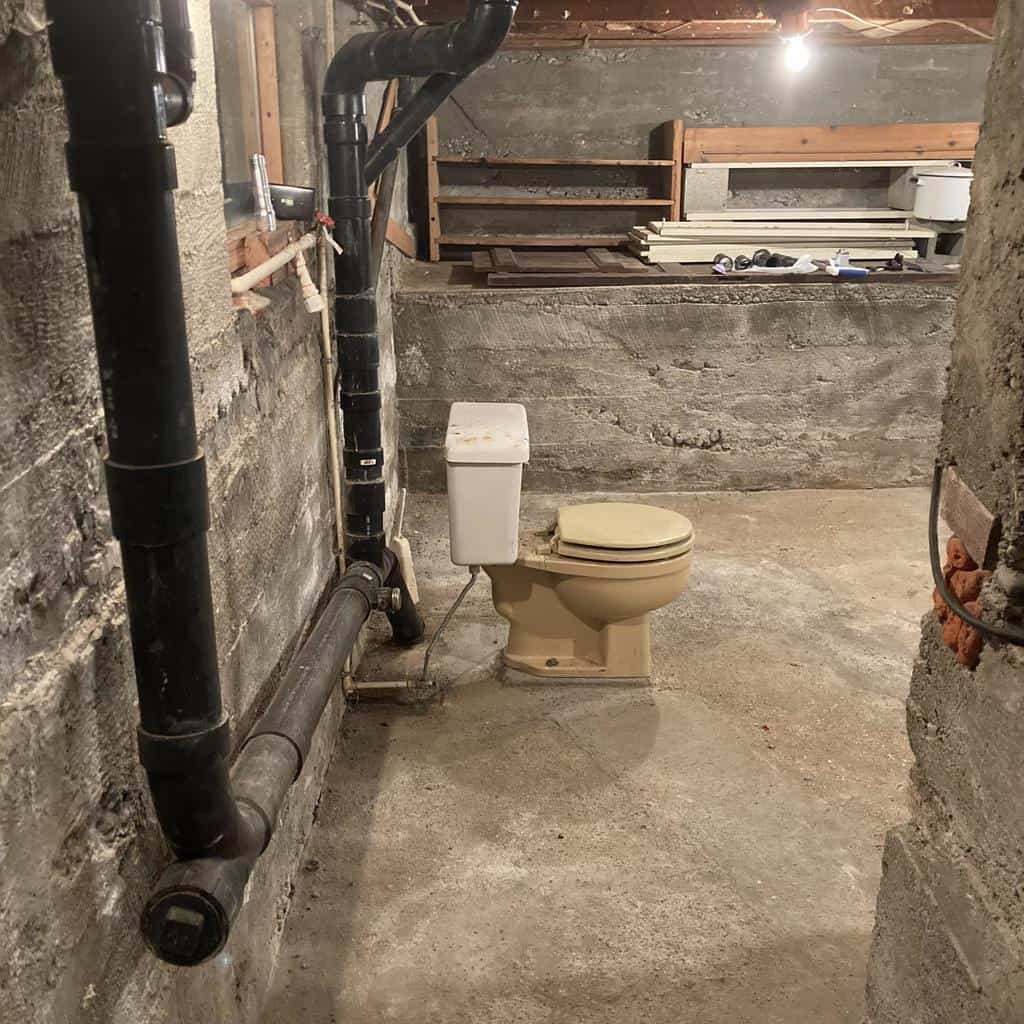Have you ever toured an old house, ventured into the basement, and discovered a lone, sometimes rustic toilet seemingly out of place? If you’ve found yourself puzzled by this peculiar feature, you’re not alone.
So Why Do Old Houses Have a Toilet in the Basement? Old houses have toilets in the basement because it provided simple access to existing plumbing and sewage infrastructure. Moreover, these toilets were usually intended for domestic staff use, or served as an extra facility in the usually undeveloped part of the residence.
In this article we dive deep into the historical context, technical mechanics, practical benefits, and the enduring charm of having a toilet in the basement.
The Historical Context Behind Basement Toilets in Old Houses
The humble beginnings of the basement toilet can be traced back to the late 19th and early 20th centuries, a time of rapid urbanisation and advancements in indoor plumbing.
Installing a toilet in the basement, often the sole sanitary facility in the house, was a pragmatic solution to an array of factors.
For starters, during these times, a basement location helped mitigate the smells associated with indoor plumbing, a relatively new innovation that had yet to benefit from modern odor control. Positioned away from the main living areas, the basement toilet maintained the overall freshness of the house.
In addition, societal norms played a significant role in this architectural choice. Privacy was paramount, and having a separate space for sanitary convenience was deemed fitting.
The basement location, lower than the rest of the house, allowed an easier connection to the sewer systems, making the most of gravity for efficient waste removal.

What is a Toilet in the Basement Called?
Sorry to disappoint you, but there isn’t any extravagant or exciting name for it! The naming of a basement toilet is usually as straightforward as its purpose—a “basement toilet.”
Toilet in Basement Name
However, in certain regions or cultures, and depending on the specifics of the setup, this humble loo can carry different monikers.
In Pittsburgh, for instance, a basement toilet is commonly referred to as a “Pittsburgh potty.” In scenarios where the sewage lines run above the toilet level and a pumping system is required, it might be called an “upflush toilet.”
How Does a Toilet Work in a Basement?
Understanding the workings of a basement toilet involves getting to grips with the specifics of plumbing in old houses.
Unlike toilets on upper floors, which rely primarily on gravity to transport waste to sewer lines, basement toilets often require additional assistance due to their lower location.
Traditionally, the waste from a basement toilet was directed into a large, floor-based drain. Sometimes, if the sewer lines were above the toilet level, a sewage pump or an upflushing system would be employed to assist in waste removal.
These systems break down the waste into a slurry, making it easier to pump uphill into the sewer lines.
The Benefits of a Toilet in the Basement
The presence of a toilet in the basement is not merely a relic of bygone times but surprisingly offers some tangible benefits.
For homeowners using the basement as a functional space—perhaps as a laundry room, workshop, or recreation area—a basement toilet adds considerable convenience, saves you having to run upstairs!
Moreover, a well-maintained basement toilet can enhance the home’s value. Hear me out here….
But it makes the basement a more versatile living space and could even pave the way for transforming the area into a self-contained living unit, potentially increasing the property’s rental appeal.
Can You Have a Toilet in the Basement?
Fast forward to the present day, and yes, you can certainly install a toilet in your basement. However, it’s essential to consider the practicality and technical requirements of such an installation.
The process can be complex, particularly if the basement is below your sewer lines.
Factors to Consider for Installation
A basement toilet installation demands meticulous planning. Factors such as adjustments to the plumbing system, adherence to local building regulations, and budgeting for costs must all be considered.
In most cases, professional guidance can help navigate these complexities and ensure a successful installation.
The Charm of Old Houses: Embracing Quirky Features
To some, a toilet in the basement might seem eccentric or even unnecessary. However, for lovers of old houses, it’s these unique, somewhat quirky features that lend charm and character.
The blend of historical architecture with the advantages of modern living creates a unique, homely atmosphere.
There is a growing trend to preserve these historical features while also incorporating contemporary conveniences, which lets homeowners appreciate the nostalgia of the past while enjoying today’s comforts.
Conclusion
The tradition of basement toilets in old houses is a fascinating interplay of history, practicality, and architectural design.
From their origins in the era of burgeoning urbanization to their potential for adding value and convenience in modern homes, these unusual features carry a story worth telling.


